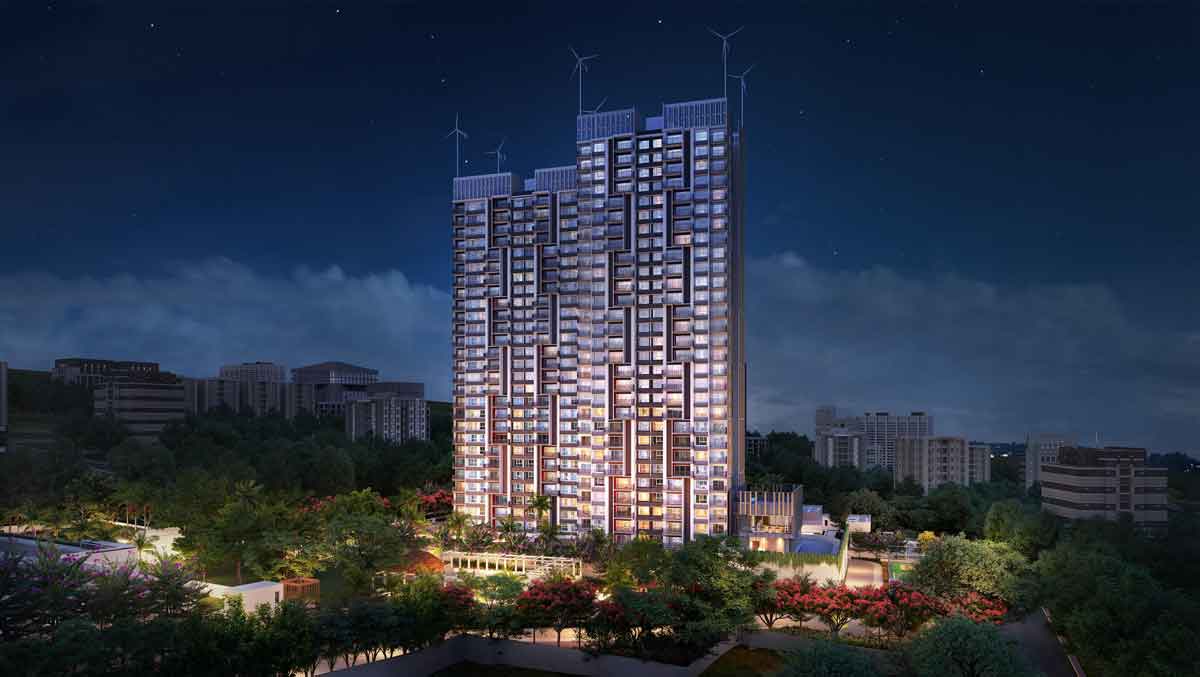

Every nation, sector and industry, as well as each and every one of us, must collaborate to find ways to reduce the amount of carbon we produce because what we do in coming years to reduce emissions will be crucial to the future.And the real-estate sector is no exception.
In real estate, decarbonisation becomes increasingly significant as the nation moves toward a net-zero carbon economy by 2070. Globally, the built environment is responsible for 75 per cent of greenhouse gas (GHG) emissions, with the building sector on its own accounting for 37 per cent. In India, about 22 per cent of total emissions are from the building sector, which is also one of the largest consumers of natural resources.
Although the terms ‘carbon neutrality’ and ‘net-zero carbon’ are two terms used most frequently to define the requirements for taking action to mitigate climate change, there is a significant lack of clarity regarding what these terms mean.
Voicing a similar opinion, Sunita Purushottam, Head of Sustainability, Mahindra Lifespace Developers says, “Net-zero energy can be achieved by reducing the energy demand, embracing energy-efficiency, and procuring the remaining energy via renewable energy or green energy sources. Balancing or cancelling out any carbon we produce is the whole point of net zero. When the amount of greenhouse gas removed from the atmosphere exceeds the amount of gas produced, we have reached net zero. Zero carbon, another key terminology in the sustainability ecosystem, refers to the amount of carbon dioxide (CO2) released from a product or service at all. Getting to net-zero carbon is tougher as opposed to onlynet-zero energy.”
“Becoming net zero involves breaking down the unnoticed efforts that go into the construction process,” says Suraksha Acharya, Founder, Midori Architects, “including tapping, documenting manufacturing building products, materials, their transportation to the project site and construction. This is referred to as embodied energy (energy consumed pre-building operation) or embodied carbon (carbon emitted pre-building operation). Though this energy is only 20 per cent of the overall energy consumed during the operation of a building, be it a home or office, this has been sadly overlooked. Climate change urgency is time-sensitive and a carbon-free built environment mindset must be adopted.”
Adding clarity on the additional classifications of net zero, Mili Majumdar, Managing Director, GBCI India and Senior Vice President, USGBCA, explains “Net zero refers to all greenhouse gases being emitted into the atmosphere. A company's greenhouse gas emissions are classified into three scopes. Scope 1 and 2 are mandatory to report, whereas Scope 3 is voluntary and the hardest to monitor. Scope 1 emissions are direct emissions from company-owned and controlled resources. Scope 2 emissions are indirect emissions from the generation of purchased energy from a utility provider. Scope 3 emissions are all indirect emissions – not included in Scope 2 – that occur in the value chain of the reporting company, including both upstream and downstream emissions. In other words, emissions are linked to the company's operations.”
Architects and designers use ‘green design’,a most favoured term in the dominion of architecture and design. “Most green design to date is about reducing operating energy, either through early-stage passive design strategies or through active mechanical strategies such as adding solar panels to offset energy consumed, or both,” elaborates Acharya.“Green sustainable is a term that is synonymous and interchangeable, used often by environmentalists and marketers, touching on preserving natural resources. A zero-carbon building is a highly energy-efficient building that is fully powered from onsite and/or offsite renewable energy sources and offsets.”
When it comes to projects that are on the drawing board or ongoing, a defined set of protocols will propel them towards the net-zero goal. However, in India, as in many countries around the world, a good deal of the challenge also lies in making existing real estate (that has been around for years and will be around for 50 to 100 more years) net zero. Retrofitting is the only way forward in such cases unless we want to demolish and rebuild.
According to a JLL report, retrofitting implies three types of interventions:
“It is a myth to believe that energy-efficient buildings cost more; developers are also incentivised to make green buildings,” opines Majumdar. “Despite incentivisation, some developers do try to cut corners. From the purchaser point of view, one needs to have the right alibi and understand what is best for the environment and make an informed decision.”
“First, the perception that green buildings are exorbitantly expensive needs to be tackled,” says Sayyed.“If energy-efficiency is designed well, right from the early stages of the building design, the need for relatively expensive renewable energy can be reduced. It has also been demonstrated in many buildings that by reducing the need for mechanical cooling/ventilation and electric lighting through incorporation of passive design features, the capital cost of building green can be minimised. The cost-benefit ratio for green starts looking better when we consider that the average electricity tariffs in India changed from Rs 3.4/unit in 2009 to Rs 6.15 /unit in 2020, while the average cost of large-scale solar power dropped from Rs 18.4/unit to Rs 2.7/unit in the same period, making the switch from fossil-fuel powered electricity to renewables more profitable. This is directly linked to lower cost of solar photovoltaic panels and the availability of net metering in many states of India.”
It is said that not all heroes wear capes – so if every building, or in the larger perspective the real-estate sector, wishes to be a champion of the environment, an ecological hero, all it has to do is adopt netzero. After all,it’s the zero that matters!